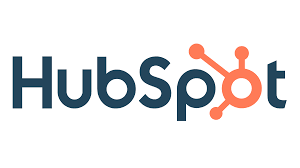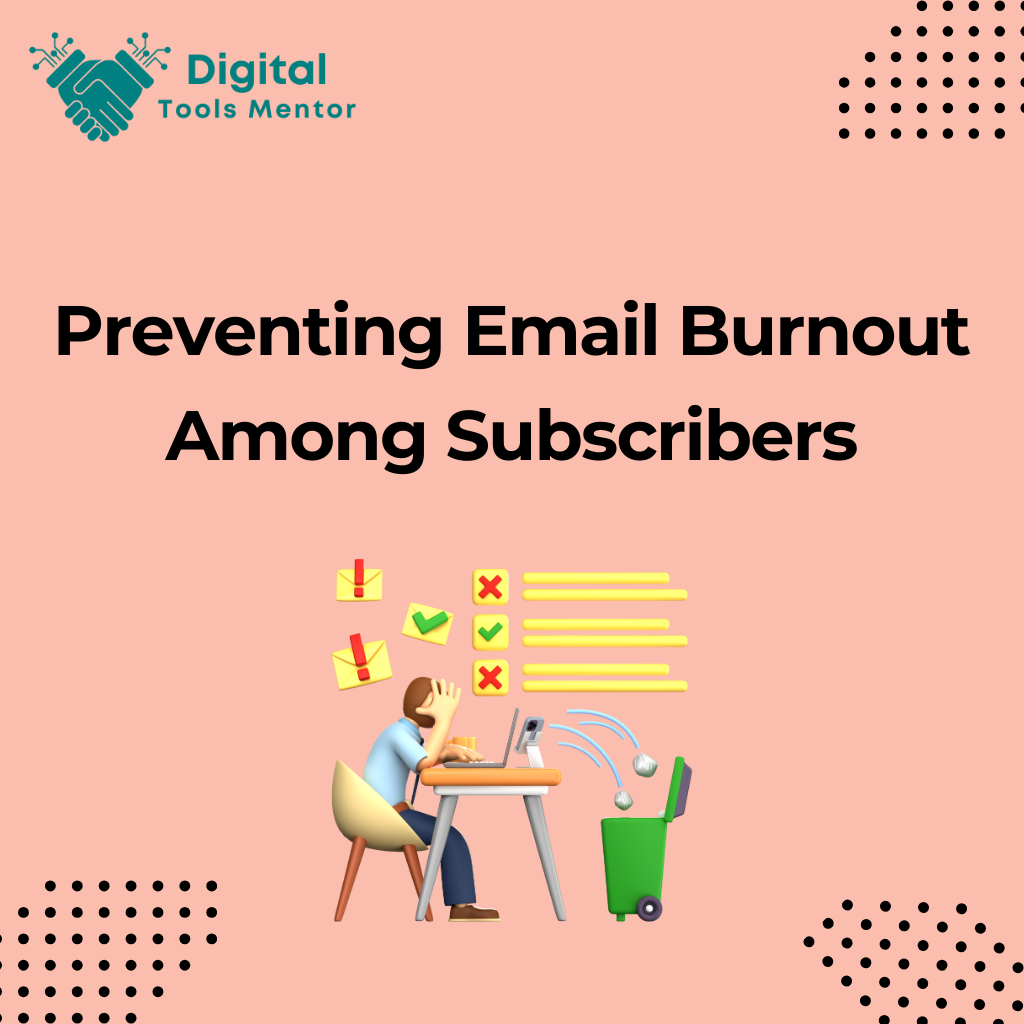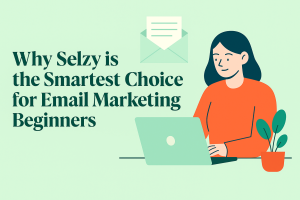How to Prevent Email Burnout Among Your Subscribers: Effective Strategies
In today’s digital age, email remains a cornerstone of business communication and marketing strategies, connecting brands directly with their audience. However, the frequent use of this tool can lead to “email burnout,” a state where subscribers feel overwhelmed by the incessant flow of messages, potentially leading them to disengage, unsubscribe, or even develop negative perceptions of a brand.
Email burnout not only affects the effectiveness of marketing campaigns but also damages the long-term relationship between a brand and its audience. To preserve these valuable connections, it is crucial for marketers to understand the signs of email fatigue and implement strategies to prevent it. This involves crafting thoughtful, relevant content and respecting the inbox preferences of each subscriber.
Maintaining a healthy email relationship is about more than avoiding spam folders; it’s about fostering a positive, interactive communication channel where subscribers feel valued and engaged. Through careful management and a focus on quality over quantity, businesses can sustain a vibrant email list that contributes to ongoing customer loyalty and business success.

Understanding Email Burnout
Email burnout refers to the state where subscribers feel overwhelmed and fatigued by receiving too many emails too frequently, often leading to a disinterest and disengagement from the content being sent. This phenomenon typically arises when there is an imbalance between the volume of emails sent and the value they provide to the recipient.
Manifestation of Email Burnout Among Subscribers: Email burnout can manifest in several ways, impacting both the subscriber’s experience and the sender’s effectiveness:
- Decreased Engagement: One of the primary indicators of email burnout is a noticeable drop in engagement rates, such as lower open and click-through rates. Subscribers who once actively interacted with emails may begin to ignore them, indicating a loss of interest.
- Increased Unsubscribe Rates: When emails become too frequent or irrelevant, subscribers may opt to unsubscribe altogether. A spike in unsubscribe rates can be a clear signal that the content is not resonating or that recipients feel bombarded.
- Negative Feedback: An uptick in negative responses or complaints regarding the frequency or relevance of emails can also be a sign of burnout. Subscribers might express their dissatisfaction directly through feedback forms or indirectly by marking emails as spam.
Common Signs Indicating Subscriber Burnout: To effectively address email burnout, it’s important to recognize its signs. Here are some common indicators:
- Ignored Emails: If previously engaged subscribers start ignoring emails consistently, it might indicate they are experiencing burnout.
- Spam Complaints: When subscribers start marking emails as spam, it’s often because they find the emails intrusive or excessive.
- Lack of Interaction: A decline in interactions such as fewer clicks, less time spent reading emails, and no forwards can suggest a loss of interest due to excessive email contact.
Understanding these manifestations and signs of email burnout is crucial for marketers to adapt their strategies. By recognizing these early indicators, businesses can take proactive steps to re-engage subscribers and adjust their email campaigns to maintain a healthy and productive relationship with their audience.
Importance of Segmenting Your Email List
Segmenting your email list is a crucial strategy to combat email burnout by ensuring that the content each subscriber receives is tailored to their interests, behaviors, and preferences. This targeted approach helps in maintaining the relevance of your emails, which is key to keeping subscribers engaged and preventing them from feeling overwhelmed by irrelevant content.
How Segmenting Prevents Burnout:
- Relevance: By segmenting your list, you can send emails that are directly relevant to each group of subscribers. This relevance makes your emails more engaging and less likely to be perceived as spam.
- Frequency Optimization: Different segments might have different tolerances for how often they wish to receive emails. Segmenting allows you to adjust the sending frequency accordingly, preventing fatigue.
- Personalization: Segmentation enables more personalized communication. Subscribers are more likely to stay interested and less likely to burn out if they feel the messages cater specifically to their needs and interests.
Examples of Segmentation Strategies:
- Demographic Segmentation:
- Age, Location, Gender: Tailor content based on these basic demographic factors. For example, promotional emails for products that cater specifically to a certain age group or gender can increase relevance and engagement.
- Behavioral Segmentation:
- Past Purchases: Send emails based on past purchases to suggest similar products or services.
- Email Interactions: Track which types of emails (newsletters, promotions, updates) a subscriber opens and interacts with, and increase the frequency of those types while decreasing others.
- Engagement Level Segmentation:
- Active vs. Inactive: Send re-engagement emails with special offers to subscribers who haven’t opened emails for a certain period. For highly active subscribers, consider sending premium content or early access to new products as a reward for their engagement.
- Preference-Based Segmentation:
- Survey Responses: Use surveys to ask subscribers directly about their preferences regarding email content, frequency, and topics. Adjust your email strategy based on the collective data from these surveys.
By implementing these segmentation strategies, you can ensure that each subscriber receives emails that are tailored to their specific characteristics and behaviors. This not only enhances the value provided to the subscriber but also significantly reduces the risk of email burnout, fostering a more sustainable and effective email marketing strategy.
Optimizing Email Frequency
Striking the right balance in email frequency is pivotal to maintaining subscriber engagement without causing burnout. Sending too many emails can overwhelm subscribers, leading to high unsubscribe rates and spam complaints. Conversely, sending too few emails can cause your brand to fade from the minds of your subscribers, potentially missing out on engagement opportunities.
Finding the Balance:
- Too Many Emails: Over-emailing can make your messages feel like an intrusion, reducing their overall impact and potentially annoying your subscribers. This often results in lower engagement rates and increased churn.
- Too Few Emails: On the other hand, if you send emails infrequently, you risk diminishing your brand’s presence in your subscribers’ minds. This could lead to missed opportunities for sales and a weaker connection with your audience.
Determining the Optimal Email Frequency:
The key to finding the optimal frequency lies in understanding your audience and the nature of your content. Here are some steps and insights to help you find the right balance:
- Industry Standards: Start by researching industry benchmarks for email frequency. Different industries have different norms; for instance, daily emails might be common in the news sector but could be excessive for a luxury brand.
- Subscriber Preferences: Give subscribers the option to choose how often they want to receive emails from you. This not only respects their preferences but also prevents burnout by aligning with their expectations.
- Segmentation and Testing: Use segmentation to categorize your subscribers based on their engagement levels and test different frequencies for each segment. A/B testing can be particularly effective here, allowing you to gauge the response to different frequencies and adjust accordingly.
- Monitor and Adjust: Regularly monitor key metrics such as open rates, click-through rates, unsubscribe rates, and spam complaints. These metrics will give you insights into how your audience is reacting to your email frequency, and whether you need to increase or decrease your sending rate.
- Context and Content Relevance: Consider the nature of your content and the context in which it is sent. For example, during a product launch or a holiday season, you might increase the frequency of your emails without negatively impacting subscriber sentiment, provided the content is relevant and valuable.
By carefully analyzing these factors and continually adapting your strategy based on subscriber feedback and behavior, you can establish an email frequency that maximizes engagement while minimizing the risk of burnout. This approach ensures that your emails remain a welcomed presence in the inboxes of your subscribers, rather than an unwanted nuisance.
Explore 23 Best Email Marketing Platforms in 2025
Creating High-Quality and Relevant Content
High-quality, relevant content is the cornerstone of any successful email marketing campaign. It not only keeps your subscribers engaged but also enhances your brand’s reputation by providing value that meets or exceeds your audience’s expectations. The right content can keep subscribers looking forward to your emails, significantly reducing the risk of burnout.
The Role of Content Quality and Relevance:
- Engagement Boost: Quality content grabs attention and maintains interest. When subscribers find your emails useful, entertaining, or enlightening, they’re more likely to engage with future emails.
- Trust Building: Consistently providing valuable content builds trust. Subscribers come to see your brand as an authoritative source, which can influence their decision-making process favorably when it comes time to purchase.
- Reduced Unsubscribes: Relevant content tailored to the needs and interests of your audience minimizes the likelihood of subscribers opting out. They’re less likely to feel overwhelmed by irrelevant messages that don’t pertain to their needs or interests.
Tips for Creating Compelling Content:
- Know Your Audience: Understanding who your subscribers are (their interests, needs, pain points) is fundamental. Use analytics and subscriber feedback to build detailed subscriber personas. Tailor your content to address the specific concerns and interests of these personas.
- Provide Value: Whether it’s educational, informative, or entertaining, each email should offer something valuable. Consider incorporating tutorials, tips, industry insights, or even humorous content that aligns with your brand voice.
- Use Engaging Formats: Vary your content formats to keep things interesting. Include well-designed infographics, videos, interactive elements (like polls or quizzes), and visually appealing images to enhance engagement.
- Write Compelling Subject Lines: Your subject line is your first impression. Make it count by being clear, intriguing, and relevant to the content of your email. Avoid clickbait tactics, as they can disappoint subscribers if the content doesn’t deliver on the promise.
- Personalize Content: Go beyond using the subscriber’s name. Personalize content based on past interactions, purchase history, or expressed preferences. This kind of personalization shows subscribers that you understand and cater to their unique preferences and needs.
- Keep It Concise: While it’s important to be thorough, it’s equally important to respect your subscribers’ time. Be concise and to the point. Break text into short paragraphs and use bullet points to improve readability.
- Call to Action: Every email should have a clear call to action (CTA). Whether it’s inviting readers to learn more, check out a sale, or watch a video, your CTA should be obvious and easy to find.
- Test and Optimize: Regularly test different types of content to see what resonates most with your audience. Use A/B testing for subject lines, images, body text, and CTAs to continually refine and improve your email content.
By prioritizing the quality and relevance of the content you send, your email marketing efforts are far more likely to succeed. High-quality content not only engages but also delights your audience, fostering a stronger, healthier relationship with each subscriber.
Personalization Techniques
Personalizing emails is an effective strategy to enhance engagement and reduce subscriber burnout by making each communication feel individually tailored and more relevant. Personalization goes beyond just addressing a subscriber by their name—it involves creating a unique user experience that resonates on a personal level, showing that you value their preferences and behaviors.
Benefits of Email Personalization:
- Increased Relevance: Personalized emails speak directly to the subscriber’s needs or interests, which makes them more relevant and engaging.
- Enhanced Subscriber Experience: When subscribers receive content that aligns with their preferences and past behaviors, it enhances their overall experience, fostering a positive relationship with your brand.
- Reduced Fatigue: By ensuring that each message is pertinent to the recipient, personalization helps in reducing the feeling of overload that often leads to burnout.
Practical Personalization Tips:
- Use the Subscriber’s Name: Start with the basics by using the subscriber’s name in the email greeting. This simple act can make the email feel more personal and less like a mass broadcast.
- Segmentation for Tailored Content: Utilize segmentation to group subscribers based on specific criteria such as demographics, purchase history, or engagement level. Tailor your messages according to these segments to increase the relevance of your emails.
- Behavioral Triggers: Send emails triggered by specific behaviors. For example, if a subscriber looks at a product but doesn’t purchase, you can follow up with an email featuring that product or similar items.
- Dynamic Content: Use dynamic content that changes based on the data you have about each subscriber. For instance, you might include recommendations based on their previous purchases or browsing behavior.
- Birthday and Anniversary Emails: Send personalized greetings or special offers on a subscriber’s birthday or the anniversary of their signing up with your service. These touches make subscribers feel recognized and valued on significant days.
- Personalized Subject Lines: Tailor the subject lines based on the data you’ve collected. For example, mentioning the subscriber’s city or a recent interaction can increase open rates.
- User Activity Feedback: If a subscriber frequently reads articles or emails about a particular topic, increase the frequency of that content type in their emails. Conversely, if they ignore certain types of emails, reduce or eliminate that content from their communications.
- Preference Centers: Allow subscribers to set their preferences regarding email frequency and the types of emails they wish to receive. This empowers them to control their own engagement, which can greatly reduce burnout.
- A/B Testing: Continuously test and refine your personalization strategies. For instance, try different personalization tactics with various segments and monitor which techniques drive the best engagement.
- Integrate Real-Time Data: Whenever possible, use real-time data to personalize emails. For example, if a subscriber was recently browsing a specific category on your website, you could send them an email featuring new arrivals or sales within that category.
Implementing these personalization techniques will help your emails stand out in crowded inboxes. By making each message feel specifically crafted for the individual, you enhance engagement, build stronger relationships, and significantly reduce the likelihood of email burnout.
Incorporating Feedback Mechanisms
In the realm of email marketing, feedback from subscribers is invaluable. It not only signals their current level of engagement and satisfaction but also provides direct insights into their preferences and expectations. Incorporating these feedback mechanisms into your strategy allows for a dynamic approach to email marketing, where adjustments are made based on actual subscriber input, ensuring content remains relevant and engaging.
The Importance of Subscriber Feedback:
- Strategy Adjustment: Feedback helps you understand what’s working and what isn’t. This insight allows you to refine your approach continuously, enhancing effectiveness and subscriber satisfaction.
- Preventing Burnout: By soliciting feedback, you can gauge the sentiment of your subscribers regarding frequency and relevance of content, allowing you to make necessary adjustments before burnout sets in.
- Building Relationships: When subscribers see that their feedback is valued and acted upon, they feel a stronger connection to the brand. This two-way communication fosters a sense of community and loyalty.
Methods of Collecting and Implementing Feedback:
- Surveys: Sending out periodic surveys is a straightforward way to collect comprehensive feedback. These can be incentivized to increase participation and can vary in length from a single question (e.g., “How did you like this email?”) to a detailed questionnaire. Use surveys to ask about content relevance, email frequency, preferences, and overall satisfaction.
- Response Prompts: Encourage replies to your emails with prompts like, “Let us know what you think!” or “Reply with your feedback.” This can provide qualitative data and make subscribers feel their voices are heard directly.
- Polls and Quick Reactions: Embedding polls or reaction buttons (like, dislike, love) in your emails can provide instant feedback on specific aspects or content pieces. This method is less intrusive and requires minimal effort from subscribers.
- Analytics and Behavior Tracking: Use analytical tools to track how subscribers interact with your emails. Metrics like open rates, click-through rates, and time spent on email content can indirectly indicate their preferences and satisfaction levels.
- A/B Testing: Regularly test different elements of your emails (subject lines, content, layouts) to see what performs best. Feedback from these tests can help tailor your emails more effectively.
- Follow-Up Emails: After significant interactions (like a purchase or event registration), send a follow-up email asking for feedback on the process. This not only provides specific insights but also reinforces engagement.
- Preference Centers: Allow subscribers to manage their own subscription settings via a preference center. Here, they can adjust the frequency of emails, select interest categories, and change other preferences. This self-managed approach reduces burnout by letting subscribers tailor their interactions with your brand.
Implementing these feedback mechanisms ensures that your email marketing remains a dynamic, subscriber-focused endeavor. By regularly soliciting and acting on subscriber feedback, you can maintain a fresh and engaging email strategy that continuously adapts to meet your audience’s evolving needs.
Utilizing Automation Wisely
Automation in email marketing is a powerful tool that can enhance efficiency and ensure consistency in communication. However, it must be used judiciously to maintain subscriber interest without crossing into the realm of annoyance. Properly executed, automated emails can deliver timely and relevant content to subscribers, fostering a more personalized and engaging experience.
Effective Use of Automation:
- Timeliness: Automation enables you to send emails at the optimal time for engagement. For instance, automated welcome emails ensure immediate contact with new subscribers, setting the tone for future interactions.
- Relevance: Use automation to send targeted content based on subscriber actions. For example, send a follow-up email with related products or content after a purchase or website visit.
- Consistency: Automation helps maintain a consistent communication schedule, ensuring that your brand stays top-of-mind without the need for daily manual intervention.
Best Practices for Automated Email Sequences:
- Segment Your Audience: Tailor automated sequences to different segments of your audience based on their behaviors, preferences, and previous interactions. This ensures that the content is relevant and engaging to each group.
- Personalize Your Messages: Even within automated sequences, personalization should go beyond using the subscriber’s name. Customize content based on the subscriber’s purchase history, browsing behavior, or engagement with previous emails.
- Set Clear Objectives: Each automated email should have a clear purpose, whether it’s nurturing leads, encouraging a purchase, or providing valuable information. This focus prevents the sequence from becoming just another series of sales pitches.
- Use a Logical Flow: Structure your email sequences to naturally progress from one email to the next. Start with a strong introduction, provide valuable content in the middle, and end with a compelling call to action.
- Monitor and Adjust: Regularly review the performance of your automated sequences. Look at metrics such as open rates, click-through rates, and conversion rates to gauge their effectiveness. Be prepared to adjust the content, timing, and frequency based on these insights.
- Limit Frequency: Avoid bombarding subscribers with too many automated emails. Establish a rhythm that keeps subscribers informed and engaged without overwhelming them. Allow for pauses in sequences to give subscribers time to absorb the information and react.
- Integrate with Other Channels: Consider how your automated emails work in conjunction with other marketing channels. For instance, if a subscriber is receiving direct mail or targeted ads, adjust your email strategy accordingly to complement these efforts and reduce the overall communication load.
- Provide Easy Opt-Out Options: Ensure that subscribers can easily adjust their email preferences or opt out of automated sequences altogether. This not only complies with email marketing laws but also respects subscriber autonomy, reducing the chance of frustration and disengagement.
By adhering to these best practices, automation can transform from a mere convenience tool into a dynamic component of your email marketing strategy, enhancing the subscriber experience and contributing to higher engagement and satisfaction.
Educating Subscribers on Managing Preferences
Giving subscribers control over what they receive is crucial in maintaining a healthy email relationship. Allowing them to manage their preferences can significantly increase their satisfaction and engagement, as well as decrease unsubscribes and complaints. This approach not only respects subscribers’ choices but also helps in targeting the right audiences with the right messages, improving the overall efficiency of email marketing campaigns.
Importance of Subscriber Control:
- Enhanced Subscriber Satisfaction: When subscribers have the power to tailor their email interactions according to their preferences, they are more likely to be satisfied with the emails they receive. This satisfaction can lead to higher engagement rates and loyalty.
- Reduced Unsubscribes: Giving subscribers control can prevent them from opting out completely. When they can easily adjust the frequency of emails or the types of content they receive, they are less likely to feel overwhelmed and more likely to stay subscribed.
- Better Targeting: When subscribers set their preferences, they provide valuable information about their interests and needs. This data enables more effective targeting, which can improve the relevance and impact of your email campaigns.
Creating Effective Preference Centers:
- Accessible Preference Settings: Ensure that the link to the preference center is easy to find in every email. Typically, it’s placed in the footer alongside the unsubscribe link. Make sure it stands out clearly to encourage interaction.
- Simple and Intuitive Design: Design your preference center to be user-friendly. Use clear labels, straightforward language, and a clean layout. Make sure it is mobile-friendly, as many users will access it from their mobile devices.
- Customizable Options: Offer various options that subscribers can control, such as:
- Frequency of Emails: Let subscribers choose how often they want to hear from you, whether it’s daily, weekly, or monthly.
- Types of Content: Allow subscribers to select the kinds of content they are interested in, such as newsletters, product updates, special offers, or event notifications.
- Topics of Interest: Provide options for topics that are relevant to your audience, enabling them to receive content specifically tailored to their interests.
- Explain the Benefits: In the preference center, briefly explain the benefits of customizing their email settings. Assure subscribers that these adjustments are designed to enhance their experience by reducing clutter and increasing the relevance of the emails they receive.
- Feedback Mechanism: Incorporate a way for subscribers to provide feedback on their experience within the preference center. This can help you continually improve the functionality and user-friendliness of the preference settings.
- Review and Update Regularly: Regularly review the options provided in your preference center to ensure they remain relevant to your audience. Update the settings as your content strategy evolves or as you gain more insights into subscriber preferences.
- Security and Privacy Assurance: Clearly communicate that subscriber preferences are handled securely and that their information is protected. This builds trust and encourages more users to interact confidently with the preference center.
By effectively educating subscribers on how to manage their preferences and by providing a robust, user-friendly preference center, you empower your audience, enhance their email experience, and optimize your email campaigns for better performance and satisfaction.
Conclusion: Monitoring and Adjusting Strategies
In this guide, we explored essential strategies to prevent email burnout among subscribers, emphasizing the importance of optimizing email frequency, creating high-quality content, personalizing messages, incorporating feedback, and educating subscribers on managing their preferences. Each of these elements plays a vital role in maintaining an engaging and sustainable email marketing campaign that respects and values the preferences and time of the subscribers.
Continual Monitoring and Adaptation:
The dynamic nature of digital marketing necessitates ongoing monitoring and adjustment of your email strategies. By regularly analyzing email performance metrics—such as open rates, click-through rates, unsubscribe rates, and subscriber feedback—you gain invaluable insights that can guide your optimization efforts. This proactive approach allows you to refine your tactics continuously, ensuring they remain effective and responsive to subscriber needs.
I encourage you to implement these strategies and actively monitor the changes in subscriber engagement. Start by integrating one or two techniques and gradually expand as you observe the benefits. Regularly update your approach based on the data and feedback you collect, and you’ll likely see a significant improvement in both subscriber satisfaction and overall campaign performance.



